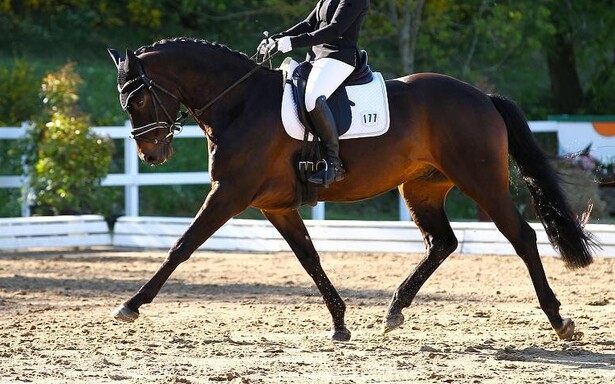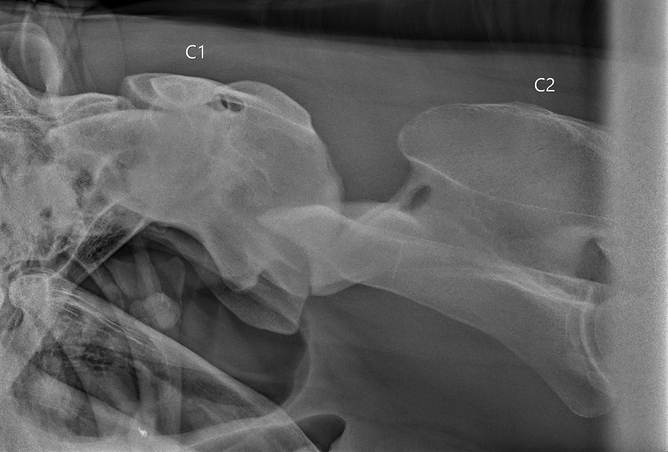While sitting up late one night watching the Dressage Competition at the Tokyo Olympics, I was intrigued by the different shapes and breeds of horses that competed, built so differently and yet required to complete the same high level movements asked of them by their rider and scored accordingly. There were Lusitanos and Andulusians, that while built with a natural topline and frame were also heavier on the ground and required incredible strength to perform a passage compared to the ‘elastic banded’ warmblood who appeared to spring from step to step like bouncing on a trampoline. What was also intriguing, was the head carriage and the upward flexion of the head and neck, with some of the necks so arched in collection one could only imagine the pressure placed on individual vertebrae, the poll and the surrounding musculature. It was evident even at this higher level that some horses found some things ‘easy’ and danced to the music like Anna Pavlova while others found it more of a challenge.
It is becoming increasingly recognised that many horses may experience neck pain involving the Cervical Axial skeleton, resulting in an inability to meet their athletic demands. The neck, the associated nervous pathway and surrounding musculature and supporting system are complicated and diagnosing which structures within the cervical region are affected is a challenge. The prevalence of neck pain in humans ranges from 30% to 50% and appears mostly associated with abnormal joint motion and disc degeneration. Even in Humans, physicians struggle to identify the source of pain even after employing advanced imaging modalities or other diagnostic techniques and obtaining verbal feedback from patients. This underscores the challenge we face in equine practice to understand and diagnose this frustrating and potentially debilitating condition in horses.
For anyone who has sustained a sudden ‘whiplash’ injury or is performing a job where head and neck positioning is in a non-neutral position (i.e. either looking down or looking up or twisted to the side), or spends a lot of time looking down at devices or computer screens, you may have experienced pain in your neck, upper back or even headaches. One could only imagine that horses may experience a similar feeling. We’ve all seen horses throwing their heads up when our hand approaches or suddenly throwing their head up when asked to take the contact. We probably also remember horses that have a ‘bad day’, a normally mild mannered horse that can become grumpy, irritable, unsociable or even develop aggressive behaviour. We may also see horses lose weight and have identified gastric ulceration in some horses that may be secondary to chronic pain.
The seven vertebrae of the neck all have key roles to play, in enabling the neck to bend sideways as well as in flexion. Side flexion or bending of the neck seems to be the most common movement to get stiff in horses. The majority of side flexion, which occurs in combination with rotation, takes place at the 3rd, 4th and 5th vertebrae. If the horse gets stiff in this area, he will try to trick by tilting his head or lunging from the base of his neck, in order to reach all the way around (as turning to touch the rider's toe or performing carrot stretches), also tilting the head at the poll. Unsteady or uneven bridle contact and head carriage, choppy flat paces, poor lengthened strides, tense lateral work and throwing the head up are some of just a few clinical observations.
Neck pain is recognised in juvenile and adult horses and can have a variable aetiology, ranging from a single traumatic incident to chronic degenerative arthritis, or a combination of both. Pain, defined as ‘an unpleasant sensory and emotional experience associated with actual or potential tissue damage’, may be caused by nerve inflammation, inflammation of surrounding muscles or of the bone (vertebrae) including arthritis. Dysfunction simply implies impaired or abnormal functioning. Clinical signs of cervical dysfunction may include reduced range of motion, gait abnormalities, and abnormal muscle tone including muscle asymmetry (atrophy or wastage, hypertrophy or hypertonicity), stiffness or inability to move the neck through a normal range of motion and altered neck carriage. Cervical dysfunction may contribute to altered gait and biomechanics of the forelimb and trunk producing additional dysfunction, pain and lameness.
There are a widespread spectrum of clinical signs associated with cervical pain and dysfunction. Affected horses may have a history of a general decline in performance, neck pain and stiffness, an unwillingness to work on the bit, subtle hind limb gait abnormalities and lack of impulsion and possible forelimb lameness. They may have difficulty in performing certain movements such as small circles, pull on the reins or start tossing their head. While some horses are presented for a decline in performing or resisting work, other horses are more dramatic in their presentation. These horses may stop and refuse to go forward and may even rear and flip over backwards. An unexplained change in behaviour is another common clinical sign, including sudden spooking, acting fearful or even being reluctant to be caught. Some of these signs can be caused by other issues such as dental pain/disease or arthritis elsewhere in the body. Neck pain may also be transient and can be misinterpreted by owners, making recognition difficult if the horse is not exhibiting signs of pain when examined. In cases with acute onset severe pain, a cervical fracture should be considered as a potential diagnosis, particularly if a traumatic event has been witnessed, and the horse managed appropriately. Horses with fractures of the vertebrae should be confined and provided with adequate analgesia; manipulation of the neck and gait analysis kept to a minimum. These horses should be kept in a calm environment and should not be tied up or excessively restrained as they may be liable to panic and exacerbate their injuries. Feed and water provided at a neutral height will help to minimise pain associated with lowering or raising the head.
Image by: Heather Busby
Investigation of cervical dysfunction and neck pain requires a full clinical and lameness examination and neurological assessment. The use of radiography and ultrasonography along with nuclear scintigraphy (bone scan) and if available, Computed Tomography (CT) can help identify lesions present. Radiographs provide a good baseline screening tool for horses with neck pain or dysfunction, however, some changes present on older horses are common and may not always be clinically significant. Boney changes, vertebral fractures, vertebral abnormalities and anatomical changes may be identified.
Treatment for cervical dysfunction and pain may involve the use of pain relieving medication (both systemic and localised intra-articular medication) along with physical medicine (acupuncture, chiropractic, physiotherapy (Bowen therapy etc) and extracorporal shockwave therapy and Elastic Therapeutic tape (Kineseology tape) may be used to help reduce neck pain. Ensuring your tack and gear is fitting correctly is also important. Bridles that are too small may put pressure on the poll, while a noseband that is too tight will create tension in the head and upper neck region.
If you are concerned about a decline in your horse's performance, increased bit resistance, head tossing or increased stiffness, be sure to get in touch with us at VetSouth Equine 03 217 6688.
- Heather Busby


